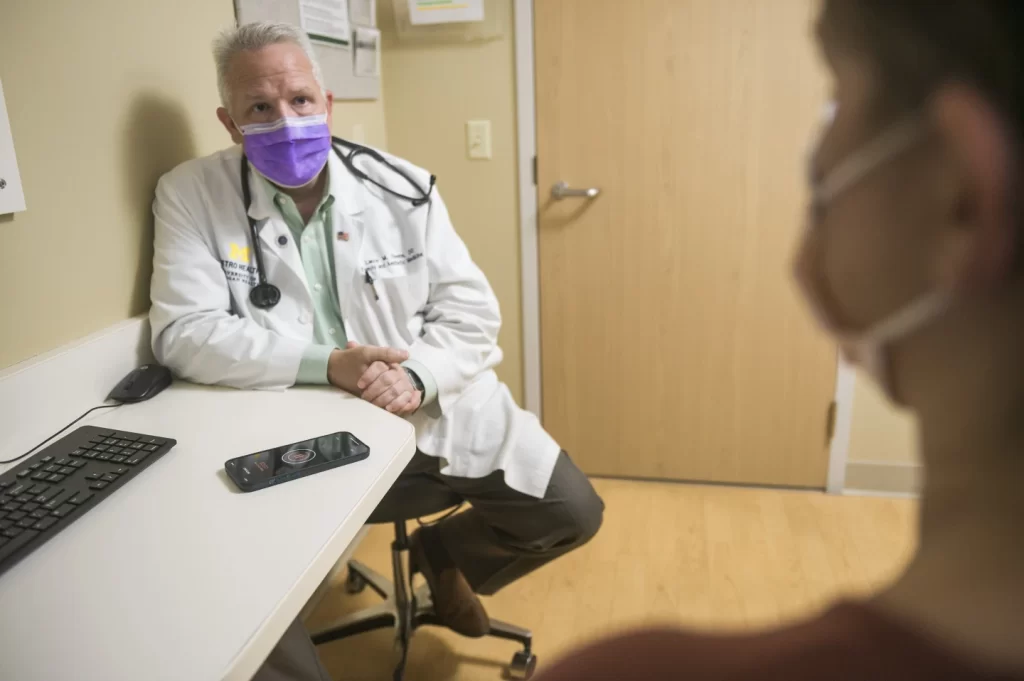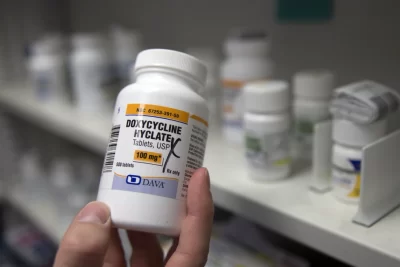
Don’t be surprised if your doctors start writing you overly friendly messages. They could be getting some help from artificial intelligence.
New AI tools are helping doctors communicate with their patients, some by answering messages and others by taking notes during exams. It’s been 15 months since OpenAI released ChatGPT. Already thousands of doctors are using similar products based on large language models. One company says its tool works in 14 languages.
AI saves doctors time and prevents burnout, enthusiasts say. It also shakes up the doctor-patient relationship, raising questions of trust, transparency, privacy and the future of human connection.
A look at how new AI tools affect patients:
IS MY DOCTOR USING AI?
In recent years, medical devices with machine learning have been doing things like reading mammograms, diagnosing eye disease and detecting heart problems. What’s new is generative AI’s ability to respond to complex instructions by predicting language.
Your next check-up could be recorded by an AI-powered smartphone app that listens, documents and instantly organizes everything into a note you can read later. The tool also can mean more money for the doctor’s employer because it won’t forget details that legitimately could be billed to insurance. Your doctor should ask for your consent before using the tool. You might also see some new wording in the forms you sign at the doctor’s office.
Other AI tools could be helping your doctor draft a message, but you might never know it.
“Your physician might tell you that they’re using it, or they might not tell you,” said Cait DesRoches, director of OpenNotes, a Boston-based group working for transparent communication between doctors and patients. Some health systems encourage disclosure, and some don’t.
Doctors or nurses must approve the AI-generated messages before sending them. In one Colorado health system, such messages contain a sentence disclosing they were automatically generated. But doctors can delete that line.
“It sounded exactly like him. It was remarkable,” said patient Tom Detner, 70, of Denver, who recently received an AI-generated message that began: “Hello, Tom, I’m glad to hear that your neck pain is improving. It’s important to listen to your body.” The message ended with “Take care” and a disclosure that it had been automatically generated and edited by his doctor.
Detner said he was glad for the transparency. “Full disclosure is very important,” he said.
WILL AI MAKE MISTAKES?
Large language models can misinterpret input or even fabricate inaccurate responses, an effect called hallucination. The new tools have internal guardrails to try to prevent inaccuracies from reaching patients — or landing in electronic health records.
“You don’t want those fake things entering the clinical notes,” said Dr. Alistair Erskine, who leads digital innovations for Georgia-based Emory Healthcare, where hundreds of doctors are using a product from Abridge to document patient visits.
The tool runs the doctor-patient conversation across several large language models and eliminates weird ideas, Erskine said. “It’s a way of engineering out hallucinations.”
Ultimately, “the doctor is the most important guardrail,” said Abridge CEO Dr. Shiv Rao. As doctors review AI-generated notes, they can click on any word and listen to the specific segment of the patient’s visit to check accuracy.
In Buffalo, New York, a different AI tool misheard Dr. Lauren Bruckner when she told a teenage cancer patient it was a good thing she didn’t have an allergy to sulfa drugs. The AI-generated note said, “Allergies: Sulfa.”
The tool “totally misunderstood the conversation,” said Bruckner, chief medical information officer at Roswell Park Comprehensive Cancer Center. “That doesn’t happen often, but clearly that’s a problem.”
WHAT ABOUT THE HUMAN TOUCH?
AI tools can be prompted to be friendly, empathetic and informative. But they can get carried away. In Colorado, a patient with a runny nose was alarmed to learn from an AI-generated message that the problem could be a brain fluid leak. (It wasn’t.) A nurse hadn’t proofread carefully and mistakenly sent the message.
“At times, it’s an astounding help and at times it’s of no help at all,” said Dr. C.T. Lin, who leads technology innovations at Colorado-based UC Health, where about 250 doctors and staff use a Microsoft AI tool to write the first draft of messages to patients. The messages are delivered through Epic’s patient portal.
The tool had to be taught about a new RSV vaccine because it was drafting messages saying there was no such thing. But with routine advice — like rest, ice, compression and elevation for an ankle sprain — “it’s beautiful for that,” Linn said.
Also on the plus side, doctors using AI are no longer tied to their computers during medical appointments. They can make eye contact with their patients because the AI tool records the exam.







